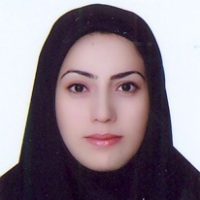Modelling of interaction between Urmia Lake water level and costal aquifer with GMS
Providing safe and sanitary drinking water is one of the goals of moving toward sustainable development, and dealing with aridity crisis is an important issue. Groundwater supplies 99% of the total available fresh water. The increasing need for more and more water resources and the finitude of water resources have led to the extraction of unauthorized withdrawals from groundwater resources. The first step toward achieving management goals and operating correctly is studying and recognizing the groundwater resources system. For studding groundwater behavior, one of the new methods is studying mathematical and computer models of groundwater that, in its turn, is an advanced and complete management tool. In this regard, a groundwater computer model called Groundwater Modelling System(GMS) was used to simulate the aquifer which is able to simulate stable and unstable conditions and has a wide variety of hydrogeological properties. It simulates groundwater flow using finite difference method(FDM). A wide range of information and a complete description of the flow system including hydraulic parameters, boundary conditions, and the pressure and stress applied to the flow are essential for the effective use of the GMS. The purpose of this study is to investigate the interactions between Lake Urmia water level changes and Meghitalu aquifer groundwater level changes in a distributed system.
Meghitalu aquifer is located in north of Urmia in Kahriz region that has interaction with Urmia lake. In order to simulate groundwater flow in Meghitalu basin and aquifer, MODFLOW module were used in the GMS model. According to geological and hydrogeological studies, the target aquifer was considered as an unconfined aquifer. The basin was considered by a three-dimensional mesh consisting 2491 cells with variable sizes between 25 and 150 square meters in 1 layer. The amount of the aquifer parameters were determined based on the geological and meteorology and geo-electrical studies and logs of the wells in the area. The location of the aquifer, the surface layers of the ground, bedrock, hydraulic conductivity, evaporation depth and supply and drain resources were procured using GIS software, and then they were added to the model after being processed.Considering that the changes in Urmia Lake water level are influencing factors on aquifer recharge and discharge, the years 1995-1996 as the highest water level, 2001-2002 as the normal condition of water level, and 2009-2010 as the lowest level were selected. The average water level of the Lake during 1965 to 2010 was 1274 meters. After implementing the model controller and ensuring that the conceptual model is unmatched by any error, the model ran in both stable condition that is based on the average annual data and in the unstable condition that is based on daily data for the length of the year.
The results of the simulation for the years 2001-2002 show that the lake recharge the aquifer in the stable condition, and rainfall and evaporation are not able to feed the aquifer; the range of hydraulic head changes in the aquifer cells is between 1254-1243 m. In unstable condition at the beginning of the year, all cells of the aquifer are wet and groundwater level are above the lake level and after 9 months of water year, status of drainage changes and the Lake starts to recharge the aquifer . The range of hydraulic head reduced from 1273 - 1412 meters in the first time step (October) to 1273-1241 meters in the last time step (September). Simulation for the years 1995-1996 and 2009-2010 demonstrated the influence of lake level on the recharging and discharging of the aquifer. The range of hydraulic head in the aquifer wet cells is reduced from 1255-1301 meter in the years 1995-1996 to 1257-1271 meter in the years 2009-2010 at the end of the simulation period . In all model implementation scenarios, wet cells with higher hydraulic head are in areas with high hydraulic conductivity. Overall, despite the lack of information in the study area, the results of the simulation were successful and the effects of tension changes were well displayed. When the groundwater level is lower than the level of Urmia Lake, the lake will feed the aquifer and the feeding will continue until the seawater is at the same level as the groundwater.
- حق عضویت دریافتی صرف حمایت از نشریات عضو و نگهداری، تکمیل و توسعه مگیران میشود.
- پرداخت حق اشتراک و دانلود مقالات اجازه بازنشر آن در سایر رسانههای چاپی و دیجیتال را به کاربر نمیدهد.



